
Processing Your Payment
Please do not leave this page until complete. This can take a few moments.
- News
-
Editions
View Digital Editions
Biweekly Issues
- October 6, 2025
- September 22, 2025
- September 8, 2025
- August 25, 2025
- August 11, 2025
- July 28, 2025
- + More
Special Editions
- Lists
- Viewpoints
- Our Events
- Calendar
- Biz Marketplace
Portland's 'hidden pollution solution' project gets to the finish line
 Photo / Courtesy Sargent Corp.
A customized excavator, dubbed “Frankenhoe,” had a super-wide undercarriage and additional arm reach that provided access the traverse the full width and depth of the excavation area.
Photo / Courtesy Sargent Corp.
A customized excavator, dubbed “Frankenhoe,” had a super-wide undercarriage and additional arm reach that provided access the traverse the full width and depth of the excavation area.
The city of Portland completed an underground sewage and stormwater overflow system under Preble Street Athletic Fields in the Back Cove neighborhood.
The Back Cove South Storage facility is a “hidden pollution solution,” as Friends of Casco Bay called it. The underground system consists of massive concrete conduits capable of holding 3.5 million gallons of stormwater and sewage during heavy rains.

Back Cove South joins earlier underground installations — under Payson Park and under Baxter Boulevard — that together form a system of trenches, pipes and tanks in the neighborhood and can now store a total of 8 million gallons of polluted water until it can be sent to the city’s wastewater treatment plant.
The Baxter Boulevard phase is called Back Cove West.
Stormwater overflow
The project was designed to enhance the city’s ability to manage stormwater and wastewater overflow in its sewer system.
At one time, the city discharged wastewater and stormwater directly into to Casco Bay. In 1979, the city built the East End Wastewater Treatment Facility.
But during heavy rainfall, the system often becomes overwhelmed, resulting in the discharge of combined sewer overflow into Back Cove and eventually Casco Bay.
The underground system captures up to half of the Back Cove neighborhood’s overflow and stores it for future transport to the treatment facility.
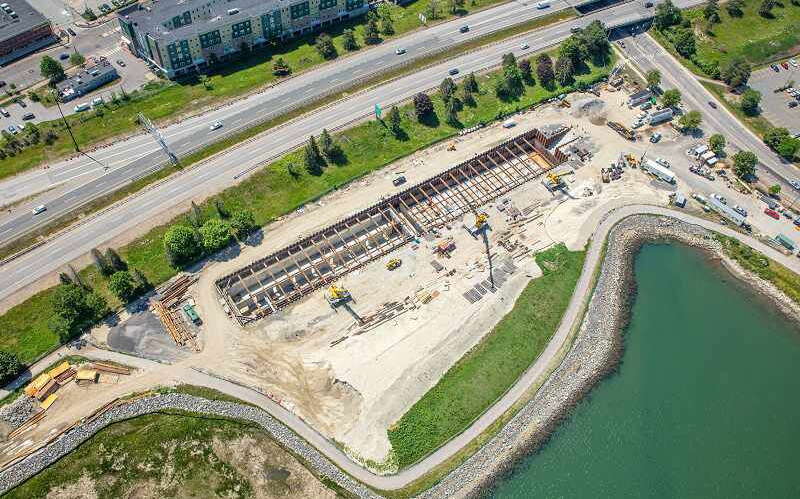
“The combined sewage and stormwater will be held there until the storm passes and the East End Wastewater Treatment Facility returns to normal operation,” at which point the overflow will be pumped empty to treatment facility, Bradley Roland, senior project engineer for Portland Public Works’ water resources division, told Mainebiz.
$42.4M project
The first phase of the project became operational in 2013, with the completion of a 2-million-gallon storage system under Payson Park. In 2023, a 2.25-million-gallon system was completed under Back Cove West, also called Baxter Boulevard West.
Mobilization for the 3.5-milllion-gallon, $42.4 million Back Cove South Storage Facility began in 2020. In addition to the underground system, the project included construction of a facility control building and restoring Preble Field at Back Cove Park, which was raised three feet to help it withstand coastal flooding.
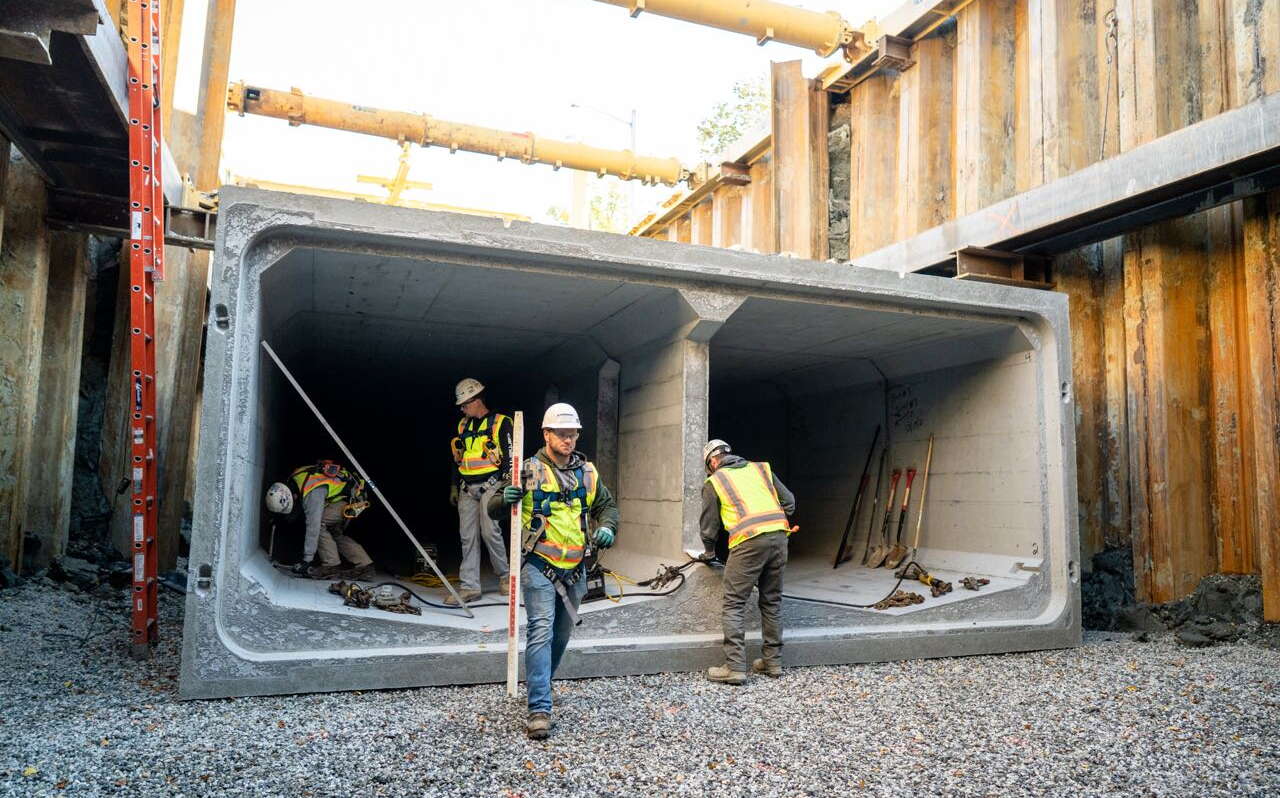
The project team included engineering firms Sebago Technics and AECOM, consultant Woodard & Curran and Sargent Corp. as the project contractor.
According to Sargent, the project included:
- Four 875,000-gallon underground tanks
- 18,000 cubic yards of cast-in-place concrete
- 1,200 tons of concrete reinforcing rebar
- 85,000 cubic yards of excavation
- 3,600 tons of asphalt pavement
- 176,000 square feet of sod
- 800 linear feet of eight-foot by six-foot concrete box culvert
- 18,000 feet of pipe
- 4,000 feet of electrical duct bank
- 44,000 square yards of geotextile fabric
- 35 subcontractors
- 12 major material suppliers
Roland praised Sargent, working with consultants, for overcoming challenges that included soft clays and tight locations.
Super-wide excavator
The project’s three phases had different challenges, said Glenn Adams, Sargent’s business development director.
For Back Cove West, complexities involved installing precast concrete storage boxes below sea level, extensive ledge removal and a constrained work area.
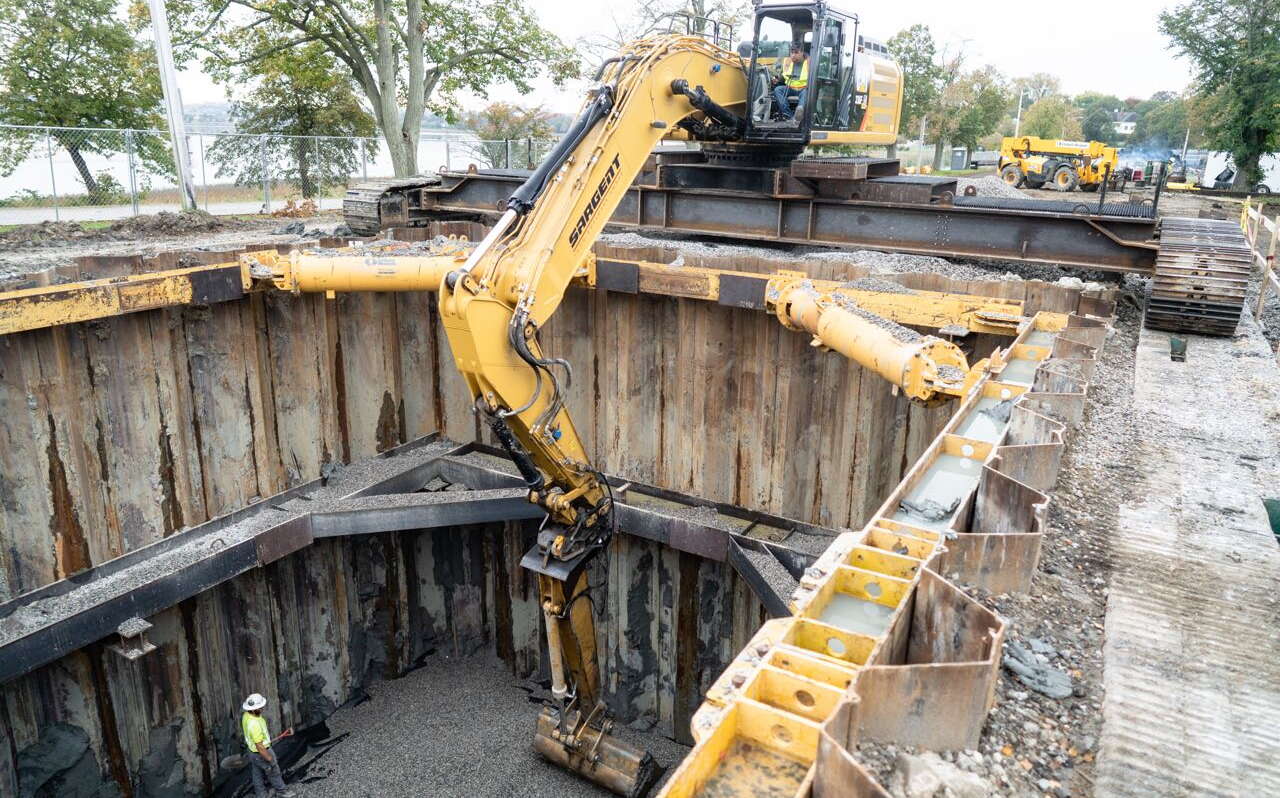
Strategies included customizing an excavator with a super-wide undercarriage that allowed the work crew to traverse the full width of the excavation area.
“Normally there’s about six feet between the tracks,” said Adams. “We had 39 feet between the tracks — really odd-looking. We called it the Frankenhoe or the hover-hoe.”
The design was needed because of the constraints of the width of Baxter Boulevard in relation to the width of the storage conduit. There wasn’t a lot of room on either side of the road to work.
“The idea of a widened excavator came about in order to use the room we were given,” said Adams.
Flexibility
The excavator was different in another way.
The main components of a typical excavator’s arm consist of a boom, which provides reach and elevation, along with a dipper, which is also called a stick. A bucket, used for scooping and digging, is attached to the end of the stick.
The custom excavator was a bit different.
“This excavator had a boom, a stick, another stick and then the bucket,” said Adams. “So we could reach deeper and we had better geometry to dig deep down” into trenches that were 20 feet deep or more and had some hard-to-reach places and some poor soil.
“We needed as much flexibility as we could get,” he said.
The design provided another advantage, in that it positioned the operator right above the work rather than to the side.
The undercarriage was designed so it could be taken apart, leaving the main body available for a standard undercarriage and other jobs. The second stick attachment has come in handy numerous times on other projects, Adams added.
Sargent received two awards for Back Cove West from Associated General Contractors of Maine: the Build Maine Award in the municipal/utility category and the Construction Risk Partners Build America award for utility infrastructure.
Wet conditions
Challenges at the most recent phase of the overall project, Back Cove South, were typical for the type of work and included large-diameter pipe installed in very wet conditions and poor soils in some areas.
“Everything there is tidal, so you’re fighting the tides and a ton of ground water,” said Adams. “You have to go through a lot more effort to de-water, to keep your excavation dry, to install pipe.”
Low-strength soil under the 250-foot by 75-foot footprint of one tank was particularly problematic. Solutions included a “jet grouting” process that involved breaking up low-strength soil with high-velocity jets of air and water and replacing part of the soil with self-hardening cement, or grout.
Additional solutions included raising the site three feet to be more resilient against sea level rise; maintaining public access to a popular recreational area called Back Cove Trail throughout construction, sometimes by rerouting sections of the trail; and protecting historic Linden trees memorializing World War II soldiers that line Baxter Boulevard by using specialized equipment to minimize disturbance.
Foreseeable future
Work is underway to update computer modeling on the city’s other sections of the sewer system, in order to evaluate where the next overflow storage tanks might be, Roland said.
In Back Cove, the system is expected to mitigate problems for the foreseeable future.
“We track volumes every year,” said Roland. The three combined sewer overflow systems — Payson Park, Back Cove West and now Back Cove South — represent 40% to 50% of the city’s total.
“So by capturing these three [sewer outflow systems], it will have a significant impact on the city’s total volume,” he said.
N.S. Giles
Bangor concrete contractor N.S. Giles received Associated General Contractors of Maine’s 2025 specialty/subcontractor division award for Back Cove South. N.S. Giles placed over 1,200 tons of rebar and poured over 18,000 cubic yards of concrete, making this the largest contract, rebar and poured concrete project in the company’s history.
Mainebiz web partners
Related Content

The Giving Guide
The Giving Guide helps nonprofits have the opportunity to showcase and differentiate their organizations so that businesses better understand how they can contribute to a nonprofit’s mission and work.
Learn More
Work for ME
Work for ME is a workforce development tool to help Maine’s employers target Maine’s emerging workforce. Work for ME highlights each industry, its impact on Maine’s economy, the jobs available to entry-level workers, the training and education needed to get a career started.
Learn More
Groundbreaking Maine
Whether you’re a developer, financer, architect, or industry enthusiast, Groundbreaking Maine is crafted to be your go-to source for valuable insights in Maine’s real estate and construction community.
Learn more-
The Giving Guide
The Giving Guide helps nonprofits have the opportunity to showcase and differentiate their organizations so that businesses better understand how they can contribute to a nonprofit’s mission and work.
-
Work for ME
Work for ME is a workforce development tool to help Maine’s employers target Maine’s emerging workforce. Work for ME highlights each industry, its impact on Maine’s economy, the jobs available to entry-level workers, the training and education needed to get a career started.
-
Groundbreaking Maine
Whether you’re a developer, financer, architect, or industry enthusiast, Groundbreaking Maine is crafted to be your go-to source for valuable insights in Maine’s real estate and construction community.
ABOUT
NEW ENGLAND BUSINESS MEDIA SITES
No articles left
Get access now
In order to use this feature, we need some information from you. You can also login or register for a free account.
By clicking submit you are agreeing to our cookie usage and Privacy Policy
Already have an account? Login
Already have an account? Login
Want to create an account? Register
Get access now
In order to use this feature, we need some information from you. You can also login or register for a free account.
By clicking submit you are agreeing to our cookie usage and Privacy Policy
Already have an account? Login
Already have an account? Login
Want to create an account? Register

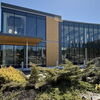

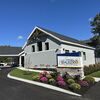


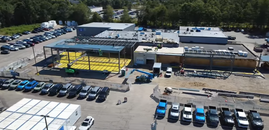
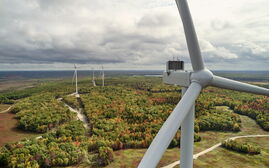



0 Comments